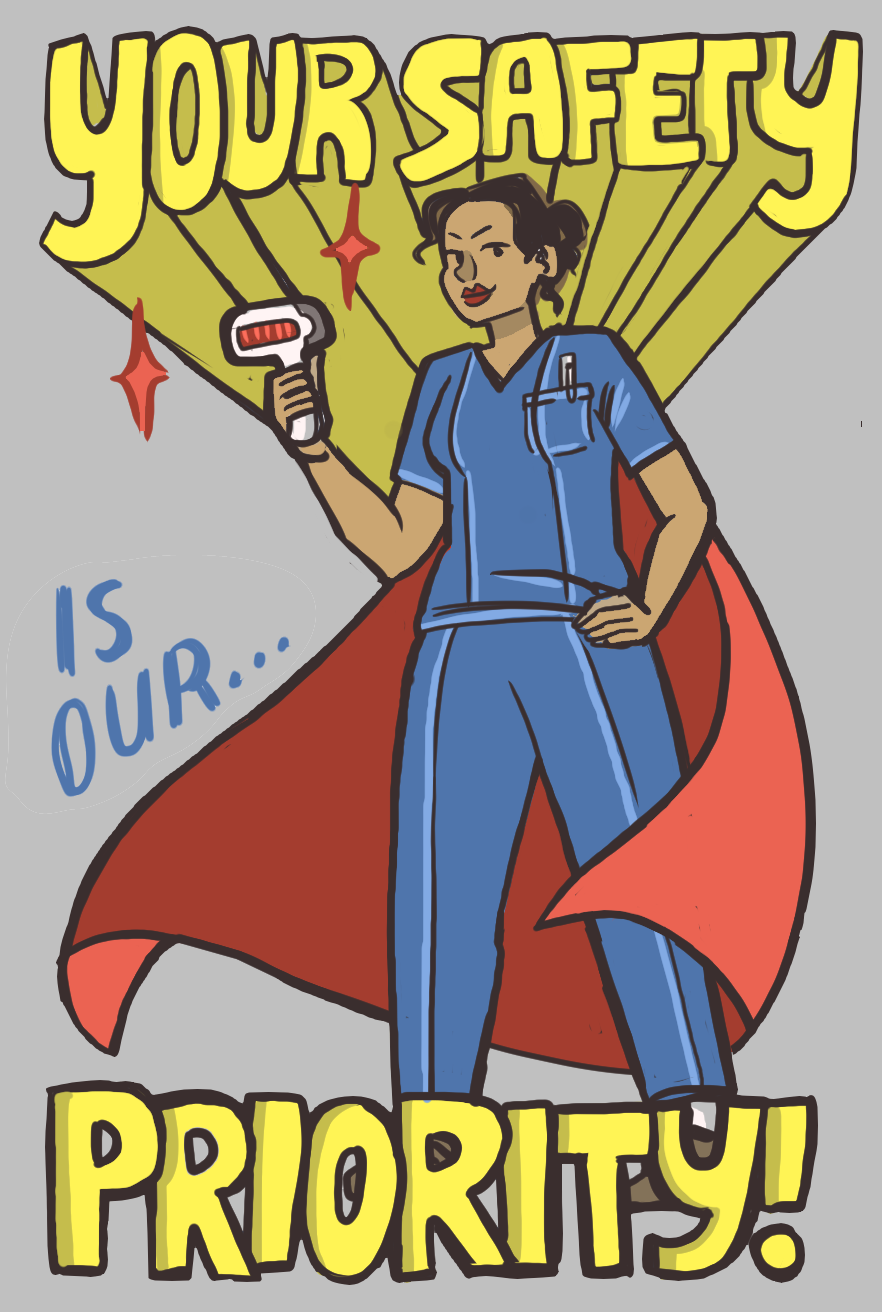SKILLS: Design Research, Rapid Prototyping, Presentation Coordination
COLLABORATORS: Johns Hopkins - The Armstrong Institute for Patient Safety & Quality + MICA MA in Social Design Students
Image by Jayne Chartrand MASD '16-'17
SUMMARY. The World Health Organization has found that failure to correctly identify patients can result in medication errors, transfusion mistakes, and wrong person procedures. The Armstrong Institute for Patient Safety & Quality at Johns Hopkins is determined to improve their patient identification process. Like most hospitals, Johns Hopkins uses patient identification bands to combat instances of patient misidentification. The bands are fitted on a patients wrist, and contain a bar code with the patient's id information, which are scanned at key times of care - before a patient is administered medication, undergoing a procedure, etc. The institute recently identified and elevated a review of instances where multiple copies of the same ID band were printed.
CHALLENGE. Since duplicate identification bands at hospitals can lead to confusion, error, and ultimately misidentification, the team at the Armstrong Institute asked the Master's in Social Design class I participated in to review their practices, and suggest possible design interventions. Over 72 house we developed both idealistic and realistic concepts to assist hospital staff in following procedure, while streamlining workflow, and building shared experiences between patients and nurses. With this combination, we felt confident we would create interventions that would reduce the amount of duplicate bands printed by the hospital staff.
How might we improve the patient identification system to reduce instances of patient misidentification?
RESEARCH. Listen to the staff! We spoke with the Patient Safety Committee, a human factors engineer at the hospital, and visited different units throughout the hospital to interview nurses and observe their workflow in order to understand the barriers to proper patient identification.
OBSERVATIONS. We discovered quickly that nurses interact with the patient ID bands more than any other staff member. Also, the new Electronic Medical Records software at the hospital required nurses to scan patient ID bands up to 5x more than the old system. This increased the workload of an already physically taxing and busy role. Therefore, it was important that interventions reduce the number of steps and tasks for nurses.
INSIGHT. While some nurses were printing duplicate patient id bands to avoid making extra trips between computer stations and the bedside of the patient, a deeper insight existed when we dug further into the interviews.
Nurses take their mission of delivering "patient centered care" so seriously, they print duplicate bands so that they can avoid disturbing patients too often, which they feel allows patients to have more rest, and a better overall quality of care.
“I cover the scan to make it quieter...I also don’t like to turn the computer on because it acts like a light in a dark room.”
“I want to be near my patient”
“When you’re not scanning, that’s when you’re developing rapport”
“Sometimes we just have to find the shortest way to get our work done”
PROTOTYPES. The following prototypes range from highest to lowest fidelity, and attempt to achieve a more efficient workflow, and allow nurses to deliver the highest possible patient centered care.
Image by Mimi Yang MASD '16-'17
Smart Phone Scanners. Outside of hospitals, smart phones already allow users to complete tasks like pay, scan QR codes, or deposit checks. And since we almost always have them on our body, why don’t nurses just use phones as mobile scanners? This existing technology would eliminate the need for nurses to leave a patients’ side, and eliminates trips between the patient and computer system in the corner of the room.
Image by Mimi Yang MASD '16-'17
Smarter Room Design. An even easier and less costly intervention is a simple redesign of the patient room. Current designs keep the materials needed for scanning id bands in the corner of the room. This new redesign mounts the computer and screen closer to the patient bed, and the charging station of the scanner is installed closer to the bed as well. These simple modifications can save the nurses’ effort to try to reach the scanners and the computer which are currently higher than most nurses should be stretching, as well as save the nurses precious steps. Lastly, this modification also encourages patient interaction because nurses don’t have to have their back to the patients while facilitating the medication entry process.
Patient Education Materials. The final intervention idea our group are proposed is a series of printed health education material for patients. This is the most passive intervention we proposed, but it also could be implemented the quickest and cheapest. The idea behind this intervention is to prime patient expectations about the wristbands, so they understand how the patient safety bands benefit them. Rebranding patient id bands to “patient safety bands” is a minor change, but this new name is intended to reflect on the band's’ primary purpose as a safety device. We also believe this could help lessen the burden on nurses by reminding patients of the need for the bands, and encouraging them to think of it as a shared experience intended to add value to their care.
Image by Jayne Chartrand MASD '16-'17
“The prototypes that are shared with faculty and staff are ever impressive, and really highlight the need to collaborate with true design researchers in preventing & solving today’s complex healthcare issues.”




